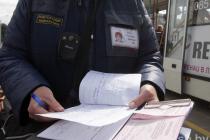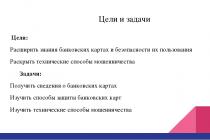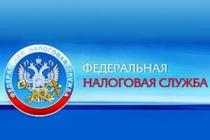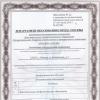Over the past month, almost all reputable international organizations have worsened the economic forecast for Belarus. They expect that the Belarusian economy will experience low growth rates in 2020, close to stagnation. This scenario is shared by Belarusian economists.
Potential of the Belarusian economy: diagnosis of creditors
On the eve of the New Year, many organizations are revising forecasts for Belarus and say that without structural changes in the economy, economic growth rates in 2020 will be very low.
Thus, the World Bank believes that the Belarusian economy will slow down in 2020-2021. GDP growth will be 0.9% next year, and 0.5% in 2021.
Our longtime eastern lender, the Eurasian Development Bank, is a little more optimistic about Belarus, predicting growth of 1.5% in 2020-2021.
The International Monetary Fund issued the least optimistic forecast and expects growth of 0.3% in our country next year, that is, in fact, stagnation.
The European Bank for Reconstruction and Development looks at our country a little more positively. According to the bank's forecast, GDP growth in Belarus will be 1.2% in 2020. By the way, compared to the previous (May) forecast for the growth of the Belarusian economy by 0.6 percentage points.
According to the EBRD, Belarus' economic prospects depend on foreign direct investment. By the way, the EBRD has been preparing several privatization transactions in our country for several years, but so far none of them have led to an influx of foreign direct investment.
“Belarus is unlikely to be able to take the next step in development on its own; it will require foreign direct investment,”- commented upon request BelaPAN economic prospects for Belarus First Vice-President of the EBRD Jurgen Rigterink.
The influx of foreign investment into Belarus will depend on the outcome of privatization projects, according to the EBRD.
“We understand the government's concerns and caution about privatization. However, it is obvious that in certain industries (the banking sector, the food industry) the conditions have already been created [for privatization], and the government should take the next step,”- said Rigterink.
According to the EBRD, financial stability achieved in the country is an important condition for economic growth, but not sufficient.
“Without breakthrough steps to improve the business environment, without attracting investors through privatization and commercialization of state-owned enterprises, it will be very difficult to accelerate the pace of economic growth and bring the standard of living in Belarus closer to neighboring countries”, - says the head of the EBRD office in Belarus Alexander Pivovarsky.
In the short term, the rate of economic growth in Belarus depends on the outcome of negotiations with Russia, the EBRD believes.
“Economic growth is expected to slow to 1.3% in 2019 and 1.2% in 2020. Future growth depends on Belarus' prospects of receiving compensation for the Russian tax maneuver, the consequences of which [for the Belarusian economy] remain unclear,” the EBRD said in its macroeconomic review.
Best case scenario and greatest threat
Belarusian economists generally share the forecasts of international financial organizations and expect that the country will experience low economic growth rates - around 1% (maximum 2%).
Thus, the IPM Research Center assumes that in 2019-2021 the economic growth rate in Belarus will be 1.2%, 1% and 0.8%, respectively. The basic forecast is based on the fact that Russia will not compensate our country for the consequences of the tax maneuver, and in the face of falling revenues, the authorities will not have the opportunity to support economic growth.
In turn, the Belarusian Economic Research and Educational Center (BEROC) assumes that in 2020, GDP growth by 2% is possible, taking into account the fact that next year a significant increase in pre-election budget expenditures is expected (to increase salaries), which will allow increasing domestic demand.
However, the medium-term forecast for all independent experts is the same: without structural reforms in the economy, growth will be close to 1-2%, or even zero. This is what many observers expect.
“Low economic growth is the most likely outcome in the current scenario, since there are no qualitative changes in the economy,”- noted in a conversation with a correspondent BelaPAN BEROC Research Fellow Maria Akulova.
The most unfavorable medium-term scenario, according to experts, is that the current Belarusian-Russian oil and gas negotiations will lead to a gradual loss of economic sovereignty.
By the way, the Ambassador of Belarus to Russia Vladimir Semashko recently stated that Belarus will be able to receive full compensation for the tax maneuver in 2022 after the unification of tax legislation with Russia.
By the way, the draft documents on deepening economic integration with Russia initially included a clause on the adoption of a unified Tax Code of Belarus and Russia.
“If there is a single Tax Code, this will mean that Belarus will lose the opportunity to independently pursue fiscal policy and determine it in accordance with its needs. If we agree to a single Tax Code with Russia, we will lose part of our economic sovereignty,”- noted in a comment for BelaPAN Senior Researcher at BEROC Dmitry Kruk.
According to experts, the scenario of deepening economic integration with Russia should not be the main and only vector of Belarus’ foreign policy.
“Negotiations on deepening economic integration with Russia are causing concern; I would not like to fall under even greater influence from Moscow. Belarus and Russia currently have low rates of economic growth, and rapprochement with our eastern neighbor will not bring additional benefits to our economy,”- Maria Akulova believes.
For economic development, it is necessary to build relations not only with Russia, but also to take into account the experience of economic policies of Western countries, experts say.
“The IMF is ready to provide long-term and cheap funds to carry out reforms in the Belarusian public sector and increase the country’s economic potential. We need to look for solutions to economic problems not only in the East, but also in the West.", - notes Akulova.
Perhaps in 2020, if the threat to economic sovereignty becomes more obvious, the authorities will seriously think about it. In the meantime, official Minsk is in no hurry to build an economic policy taking into account the recommendations of Western creditors, economists say.
“The most favorable scenario for the Belarusian economy is policy reformatting, readiness to carry out structural reforms in various areas and the resumption of negotiations with the IMF on a loan program. However, so far there is no political will to accept this scenario,”- Dmitry Kruk summarized.
In October, the drop in real incomes of Russians was the highest since 1999. but officials expect that next year the welfare of residents will begin to grow and by the end of 2018 it will reach pre-crisis levels.
When we “untie” the belts tightened during the crisis, AiF told Yuri Veselov, Doctor of Sociological Sciences.
Yuri Veselov: This economic crisis will be one of the longest and most noticeable for the population. Because it was not the state that paid for it, for example, with its reserves to maintain the ruble exchange rate or reduction of expenditures on the state apparatus, but ordinary Russians. Since our country depends on imports for many indicators, you and I pay the entire exchange rate difference. Now, having gone through the currency and banking crises, the decline in real industrial production, we have entered the “social stage”, when real incomes of the population, consumption levels, and so on are declining. And their restoration next year is impossible.
According to forecasts for 2017, GDP growth will range from 0 to 1%. How will incomes increase if there is no increase in production?
And we will also come out of the crisis in stages, first the financial sector, the production sector and, lastly, the incomes of Russians. So, most likely, only at the end of 2018 will we see positive dynamics in the country’s economy. But this requires structural reforms. For now, we are counting on miracles and are frozen in anticipation of the return of high oil prices.
Money - yes
Olga Salnikova, AiF-Petersburg: At the same time, the Ministry of Finance is considering various options for replenishing the budget, including by increasing the burden on the salaries of Russians. It has already been proposed to raise income tax from the current 13% to 15-16%, increase VAT, change the system of payment of insurance premiums...
It is now economically unprofitable to increase the already high tax burden on citizens. Yes, the employer transfers 13% of income tax from employee salaries. But, in addition, he contributes 22% for each employee to the Pension Fund, another 5.1% to the compulsory medical insurance fund, 2.9% to the social insurance fund - a total of 43%. It's already too much! Let's compare with other countries. An indicator of the tax burden on a country's economy is the share of taxes as a percentage of GDP. So, in this regard, we have long overtaken the bastion of capitalism in the United States with its 28%, reaching the figure of 35%.
Of course, in neighboring Sweden it is all 50%. But here the question arises - what does the population receive for these contributions to the budget? Let the government announce an increase in the transport tax, but ensure that this money goes to new roads and bridges.
In Germany, Germans are in a hurry to pay contributions to the pension fund, because they know that they will be provided for in old age. In Russia, no one gives such guarantees; the population has no trust in the tax system. Therefore, an increase in the tax burden will only lead to shadow business and “gray” salaries.
However, to replenish the budget, it is not necessary to reach into the pockets of citizens. There is money in the state - and the process of saving must begin with the state apparatus, reducing its costs. It is logical to abandon costly image projects on a global scale during the crisis. Undoubtedly, the Olympics and football championships are honorable events for the country, but in today’s economic situation we cannot afford them. For this reason, Rome, Toronto, and Hamburg withdrew their bids to host the 2024 Summer Olympics. Fortunately, St. Petersburg was smart enough not to serve it.
In addition, we see that military spending is growing - its level has already reached 4% of GDP, while NATO does not reach 2% in its countries.
How do you feel about the possible introduction of the so-called “tax on parasites”? The Ministry of Labor wants to take about 20 thousand rubles a year from the “lazy people”, which will be used to cover their social needs...
I am interested in the question: who are parasites? Housewives who raise children and do household chores? So this is also work, not easy and worthy. Women often work more at home than men in the office. Or are young people who cannot find a job classified as “lazy”? The mechanism for collecting 20 thousand rubles from people who earn nothing is also unclear. By the way, even though our ministries have counted 20 million “lazy people” in the country, Russians cannot be accused of parasitism. We have an 8-hour working day - this is one of the highest in the world, comparable, for example, to Mexico. Developed Western countries have long been moving to a 5-6 hour working day. Another thing is that our labor productivity is low due to the use of outdated technologies and manual labor.
Are we stifling business?
The well-being of St. Petersburg residents depends on the economic policy in the city. At the last PEF, presidential aide A. Belousov criticized the work of the leadership of the Northern capital in creating conditions for business. And for the second year in a row, the Agency for Strategic Initiatives has given us low ratings for investment attractiveness. Are these the consequences of the economic crisis or ineffective management?
Of course, the consequences of the crisis in the form of a drop in production and a decline in business activity could not bypass the Northern capital. Another thing is that you can try to resist this through effective economic policy within a particular city. How Moscow does it. In my opinion, St. Petersburg is now adhering to the strategy: fewer cases - fewer problems. Don’t stick your neck out with initiatives, don’t attract investors, but sit and wait for the Lakhta Center to be built and Gazprom to move here along with all taxes.
At the same time, large players came to the city: Nissan, Toyota, Ford, Hyundai, whose factories today cannot operate at full capacity. And General Motors Corporation completely curtailed production in the city. Every day I drive past the Nissan plant and see the city dump growing nearby, the smell is unbearable. It is enough for any foreign investor to look at what conditions have been created for business in order to delete St. Petersburg from their plans forever.
Or let's remember Belousov's words at the PEF that connecting to power grids in Moscow takes 60 days, and in St. Petersburg - 81. And a Western investor is generally accustomed to being provided with a plot of land already with communications. In the mid-2000s, in order to connect Ikea to Parnassus, we actually had to involve the federal authorities! One of the largest investors in the world starts his business in the city, but he has no electricity - half the parking lot is occupied by diesel generators... And nothing has changed since then.
Of course, there are also positive aspects. For example, St. Petersburg has become the most attractive city for students. We are actively developing IT technologies, telecommunications, pharmaceuticals, another question - thanks to or in spite of local economic policy.
On November 2, the St. Petersburg parliament will consider the draft budget for next year in the first reading, about which there are already heated debates...
In her speech about the draft budget for 2017, deputy Oksana Dmitrieva accused the Finance Committee of unprofessionalism. Many agree with this assessment. On my own behalf, I will add that the main income of our budget (45%) is the tax on the income of individuals and only 26% is the tax on corporate profits, and even less - 4.8% - is income from the use of state property. It feels like there is nothing in the city to rent out and make money from. In fact, St. Petersburg residents support the city themselves and have the right to ask the authorities what their money is used for. And they are used not for development, but for patching up holes and often unjustified subsidies to private and state-owned enterprises. Just look at the agreement with the WHSD concessionaire, to whom we must compensate 4.6 billion rubles for lost profits this year. We see ineffective spending of funds year after year. 190 billion rubles from the 2016 budget have not yet been spent, which means that there will be a rush again, laying asphalt in the snow and so on. As for the record deficit of 64 billion rubles, it will be covered by increasing government debt and securities. This is normal practice. The debts will then have to be repaid with interest, but this burden will fall on the shoulders of the next city authorities. And St. Petersburg residents.
- Tell us how to properly “tighten your belts” in a crisis? What is not worth saving on?
The city cannot skimp on social spending and human capital. For St. Petersburg residents themselves - on quality nutrition, education, health, travel, hobbies and improved living conditions. There is a universal recipe for saving: if you can, don’t buy new, fix old.
Lev Margolin, economist:
– There will be no significant differences in the country’s economy compared to this year. The decline will continue. Perhaps less than this year, but there will be no growth. How significant this decline will be depends on the outcome of negotiations with Russia on oil and gas.
As for the exchange rate of the Belarusian ruble to the dollar, if the National Bank continues its tight monetary policy, the dollar movement next year will be within 10% - maximum 20%. If a shrinking economy forces massive cash injections in the form of loans, then the rate increase could be 50% or even 100%. Everything is in the hands of the authorities.
People's wages will continue to fall. To reverse this trend, the country needs investment, primarily foreign. But they are not expected. The second way to increase wages is through massive job cuts. But the authorities most likely will not dare to do this.
Unemployment will certainly rise. Enterprises will reduce production volumes, demand for their products will continue to fall, and they will try to get rid of unnecessary ballast in the form of labor.

Anton Boltochko, economist:
– Next year is a year in which important economic and political decisions will need to be made. Without them, it will not be possible to wait out or survive the current economic situation once again.
If we nevertheless accept the inertial scenario, in which economic policy remains at the same level, in the same form as now, then we will face another year of recession and a decline in GDP. The economic picture can be called Nebrezhnev's modern Belarusian economic stagnation.
The decline in household incomes will continue, unemployment, both registered and unregistered, will increase due to the difficult financial situation of enterprises. I don’t believe in the 9% inflation that the authorities are talking about. It will be higher, and its level will affect the exchange rate of the Belarusian ruble to the dollar.
This year it was supported by the donation of currency by the population. Next year, unfortunately, Belarusians will have less money, and as a result we will see a weakening of the national currency. There will be no landslide devaluation, and, most likely, the Belarusian ruble will fall in price by the inflation rate with minor deviations.

Yaroslav Romanchuk, economist:
– Next year will be more difficult than this one. The economic recession will not end. How much it will fall in 2017 – by 1% or 4% – will depend on how many conditional black swans will fly to Belarus. We will, no doubt, receive a couple from Russia in the form of supplies of oil, gas, prices for potash fertilizers and terms of trade on the Russian market. Exports will fall, there is nowhere to expect investment.
The real estate market will continue to fall.
State-owned enterprises will actively lay off workers, and unemployment in the country will de facto rise to 500 thousand people. If the company performs well, the salary of its remaining employees will be 250-400 dollars in a very good scenario. If the company falls under restructuring, 150–200 dollars will seem like happiness.
The National Bank will most likely not be able to continue its tight monetary policy as this year, and inflation will be more than 10%. A dollar will cost three Belarusian rubles, and in a pessimistic scenario even more.
The process of Belarusian-Russian integration, which has been going on for 20 years, has allowed the Belarusian economy to support the existence of the political regime for many years Alexandra Lukashenko. During the years of independence, the country experienced several economic crises, but none of them became the reason for the growth of social tension in the country. The Belarusian leader always skillfully took advantage of the emerging situation, and Russia, despite dissatisfaction with the actions of its ally, always came to the aid of Minsk. However, what in past years was seen in Belarus as an established system, in which a crisis is replaced by a period of growth and the preservation of Russian subsidies, today appears to be a thing of the past. According to experts, the Belarusian socio-economic model is currently facing much more serious problems than before, and another crisis is looming on the horizon, the consequences of which could be the most dire.
Analysts have been saying for quite some time that not everything is in order with the Belarusian economy. However, until 2019, despite the falling standard of living of Belarusians, a decline in GDP, ongoing inflation, a reduction in production and other clearly negative signals, the republican authorities continued to claim that nothing terrible was happening in the country. With the beginning of the process of negotiations on further integration within the Union State (US), such rhetoric ceased to withstand any criticism. After the reduction in funding for the local economy from Russia and the financial structures controlled by it, it turned out that the process of stagnation in Belarus began to gain momentum. It may be recalled that the Russian Federation actually refused to provide Minsk with a previously agreed loan in the amount of $600 million, and then the Eurasian Development Fund (EDB) did not transfer the last tranche of $200 million to Minsk. Such a serious minus in the republic’s finances could not but affect the mood of the Belarusian authorities, where in the middle of the year they began to directly talk about the fact that the country would have to tighten its belts. The result of all this was the republican budget for 2020, which was adopted by the Belarusian parliament in November.
According to the plans of the Belarusian government, for the first time in the last six years, the republic’s budget will become deficit - minus 995.1 million Belarusian rubles (about $475 million), or 0.7% of GDP. Moreover, the document was calculated not according to a pessimistic, but according to a basic scenario for economic development: GDP growth was set at 1.9%, inflation - 5%, refinancing rate - 9.5%, oil price - $ 60 per barrel. The government does not hide why next year the republic will be forced to spend more than it earns. Unresolved problems in Belarusian-Russian relations were identified as the main factors negatively affecting income. For example, the impact of the “tax maneuver” in the oil industry of the Russian Federation (minus 537 million rubles, or about $255 million), the termination of the “re-customs clearance” of Russian oil (minus 951 million rubles, or more than $450 million), as well as rising gas prices, which also comes from Russia. In total, the total budget losses associated with unresolved issues with Moscow could amount to 1.9 billion rubles, or more than $900 million.
A few days before the celebration of the 20th anniversary of the creation of the Union State, neither Minsk nor Moscow still can not answer the question of whether it will be possible to solve at least half of the problems of bilateral cooperation that have accumulated in recent years. As noted by the prime ministers of Belarus and Russia Sergey Rumas And Dmitry Medvedev after the meeting held on November 19 in Gorki near Moscow, the parties are still on the path to agreeing on roadmaps in the economic sphere. At the same time, the main problems, primarily in the oil and gas sector, must be completely resolved Alexander Lukashenko And Vladimir Putin at the upcoming Supreme State Council of the SG in December. However, as was later stated by the Secretary of State of the Union State Grigory Rapota, the date of the meeting had not been set at the end of November. Although it was initially assumed that it would take place on the 20th anniversary of the signing of the Union Treaty - December 8.
Amid uncertainty about how further cooperation between countries will develop on issues of oil and gas supplies, as well as compensation for the “tax maneuver,” many economists said that the events of eight years ago could be repeated in 2020. In 2011, one of the most serious economic crises erupted in Belarus, when the Belarusian ruble devalued three times, inflation for the year amounted to 108.7%, and the standard of living of ordinary citizens fell almost by half. At the same time, the latest actions of the Belarusian authorities indicate that they have begun to intensively prepare for the development of just such a situation.
The information and analytical agency “Business News” analyzed the main indicators-precursors of a currency crisis and assessed the likelihood of its occurrence before the end of 2017.
To assess the likelihood of a currency crisis, the signal method was used, which involves monitoring a given set of indicators, the dynamics of which differ significantly in pre-crisis periods.
At the first stage of the analysis, it is necessary to determine the periods during which the economy was in a state of crisis. To solve this problem, we used the exchange market pressure index (EMPI), which is the weighted average sum of the monthly growth rate of the national currency exchange rate, the growth rate of gold and foreign exchange reserves with the opposite sign, and the level of the interest rate. In the calculations, the average rate for loans in national currency for a period of up to 1 year for legal entities was used as the interest rate.
Episodes of tension, when the Belarusian economy was in crisis, were considered to be periods when the EMPI index reached its average value and exceeded it by two and a half standard deviations. During 2003-2017 this happened several times: in January 2009, May and October 2011, and in January 2015. At the same time, in 2011, from mid-March to October, multiple exchange rates were recorded, which in itself is a sign of significant tension in the foreign exchange market. Therefore, January 2009, the entire period from April to October 2011, and January 2015 were considered as episodes of tension.

In the scientific community, to identify episodes of currency tension, a set of potential precursor indicators has been developed, the dynamics of which may indicate an upcoming increase in tension in the foreign exchange market. These indicators are conditionally divided into four groups: current account indicators, financial account indicators, indicators of the real and financial sectors of the economy.
In theory, it is assumed that precursor indicators begin to give signals about the approaching currency crisis in advance, i.e. during the signal window. As a rule, the length of the signal window is set at 2-3 quarters so that the government and the Central Bank have enough time to identify the crisis situation and take measures to mitigate the negative consequences. Therefore, when assessing the likelihood of a currency crisis for Belarus, the length of the signal window was set at 9 months.
For different countries, predictor indicators may work with varying degrees of effectiveness. Therefore, in accordance with the signaling approach methodology, 6 indicators were selected for Belarus that demonstrated the best results when tested. In particular, these indicators were the real effective exchange rate, imports of goods and services, international reserve assets, the ratio of M2 to international reserve assets, the ratio of the interest rate on loans to the rate on deposits in the national currency and the volume of deposits adjusted for inflation. The data frequency was one month.
Subsequently, based on the best indicators for Belarus, a composite index of currency stability was calculated, the dynamics of which increased in the signal windows before the crises of 2009, 2011 and 2015. However, due to the fact that this index has a certain inaccuracy, its value before the 2011 crisis began to increase only the day before.
In turn, for the crises of 2009 and 2015, a significant increase in the value of the composite index was observed nine months before the currency crisis.

Among the indicators-precursors of a currency crisis that were included in the calculation of the composite index, 3 out of 6 crossed their threshold value in recent months and were in the area of critical values.
The first of them was the index of the real effective exchange rate of the Belarusian ruble. The calculated threshold value for this indicator was minus 2.9%. The real effective exchange rate has been below its calculated threshold since January 2016. Typically, an overvalued real exchange rate and a weak external sector create the preconditions for a currency crisis.

The second indicator-precursor of a currency crisis, which was in the critical range, was the ratio of the loan rate to the deposit rate in the national currency. The calculated threshold value for this indicator was 171.2%. The area of critical values for this indicator is above the threshold level. In many cases, before the onset of currency crises, there is an increase in the gap between lending rates and deposit rates. As a rule, this is explained by the expansion of domestic credit. In this situation, the share of bad loans increases, and banks raise loan rates in order to compensate for possible losses from non-repaid loans. Deposit rates are also rising, but to a lesser extent.

The third indicator that gave signals was the volume of deposits adjusted for inflation. For this indicator, the calculated threshold value was 105.5%. Accordingly, the area of critical values for this indicator is below the threshold level. Thus, the outflow of deposits from the banking system may also create preconditions for the emergence of a currency crisis.

Based on the aggregated index of currency stability, the probability of a currency crisis was calculated. The results obtained show that the probability of its occurrence before the end of 2017 is 53.3%. The first index outlier was observed in January 2016. At the same time, maintaining the probability of a currency crisis at the same level for a long time may cause caution. It is also worth noting that the dynamics of the real effective exchange rate index of the Belarusian ruble has been improving in recent months and tends to leave the area of critical values, which will subsequently reduce the likelihood of a currency crisis. In addition, the transition of the National Bank from a fixed exchange rate regime to a floating one in 2015 allowed to reduce the level of tension in the economy and provided the regulator with more mechanisms to regulate the situation in the country’s foreign exchange market.















